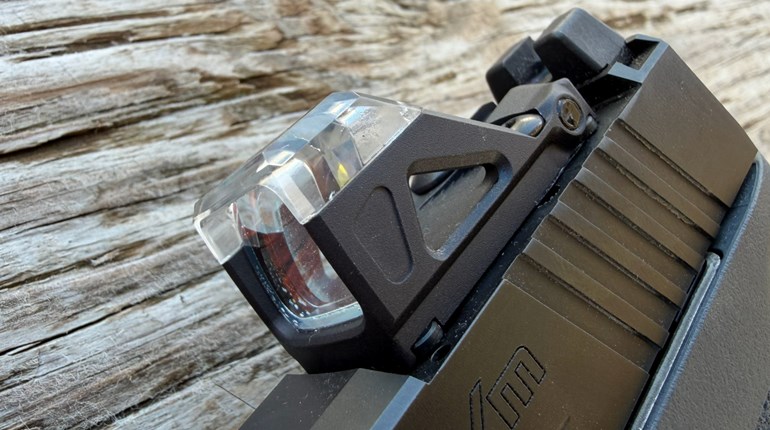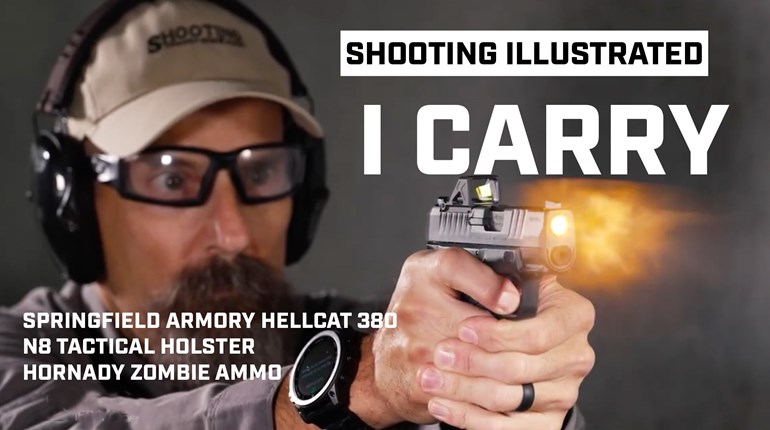
While shotguns and carbines can make fine home-defense guns, a handgun is a perfectly suitable home-defense tool. Whether because the handgun is the only tool available, or because one’s home defense plan makes a pistol the best choice, many people rely on handguns for protection in and around the home. If a handgun is the tool of choice, how to we choose the ideal handgun and optimize it for the purpose of home defense? Let’s examine some of the critical questions we must answer to find our optimal home-defense handgun set up.
Choosing A Caliber
Despite what you may have read, there is little practical difference between the common defensive calibers, and whichever one you shoot the best and you already possess will work fine. The only calibers I’d recommend against are the large magnum hunting calibers such as .44 Mag., as these cartridges--while certainly effective--are overpowered for the task and can pass through a human target with considerable energy, meaning they can pose a risk to fellow inhabitants and neighbors. Instead, it is generally advisable to stick with commonly used defensive calibers such as 9mm, .40 S&W, .45 ACP, .38 Spl, or .357 Mag. Shot placement is far more important than caliber selection. Choose a common defense caliber and practice until you can score hits precisely where you intend to.
Handgun Size Matters
For those who can own a handgun specifically for home defense, full-size handguns are the ideal choice. Most shooters will be able to acquire a more solid grip on a full-sized handgun than a smaller one, and therefore shoot better. Likewise, within the same caliber, felt recoil will be considerably reduced in a larger, heavier gun, because the recoil is acting on the greater mass of a full-sized gun. Many people instinctively presume that small guns are appropriate for small people, but in reality, the larger and heavier the gun, the more controllable it will be under recoil. So when concealment is not a consideration, opt for a full-sized handgun.
Magazine Capacity
Ammunition capacity seems to be very important to some people, but when studying real-world defensive gun uses among private citizens, it is less important than the imagination leads us to believe. Few criminals hang out and trade rounds with an armed citizen for a protracted period of time. At distances encountered in and around the home (5 yards or less), most bad guys will either win, lose or flee at the very first rounds exchanged at close range.
That said, if you’ve chosen a semi-automatic pistol as your home defense gun, concealment is not a factor and there is no downside to having more ammunition available. Using standard-capacity magazines or reliable extended magazines holding 15-20 rounds can be a sound practice. While circumstances requiring 20 rounds or more to solve a bedroom-hallway shooting problem are less common, they do happen, and there’s no downside to having more rounds in the gun should you be faced with multiple attackers. Also, the additional weight added to the gun will make it that much easier to drive and control the gun under recoil. That said, I firmly believe revolvers are viable options for home-defense handguns. Full-size revolvers with a six- to eight-round capacity and quality triggers are perfectly adequate tools for home defense, presuming one is skilled in their use. What is ultimately far more important than capacity by itself is that the gun functions reliably and all the rounds in the gun are actually available to be fired, if needed.
Sighting System Options
 The two common options are iron sights and handgun-mounted optics. Each option has advantages and disadvantages, and choosing the best option for you requires understanding them. Iron sights are simple and low maintenance. While they can and do occasionally break and fail, they typically are something you mount to the gun and forget about other than during training and practice. The downside is that iron sights require you to manage three visual planes while aiming, by aligning the front sight, the rear sight and the target, and can be tough to use for people with diminished eyesight.
The two common options are iron sights and handgun-mounted optics. Each option has advantages and disadvantages, and choosing the best option for you requires understanding them. Iron sights are simple and low maintenance. While they can and do occasionally break and fail, they typically are something you mount to the gun and forget about other than during training and practice. The downside is that iron sights require you to manage three visual planes while aiming, by aligning the front sight, the rear sight and the target, and can be tough to use for people with diminished eyesight.
Conversely, quality handgun-mounted optics are simpler to shoot, because they only require you to look at the target and superimpose the dot onto the target, with everything on the same visual plane of focus. The downside is that optics are more expensive, and require proper mounting, sighting in, maintenance of batteries, lenses and mounting screw torque. I have red-dot sights on most of my defensive handguns, because I prefer the precision and simplicity of use they offer and I don’t mind the time and expense of setting them up properly. However, I still shoot and use some iron-sighted guns for specific purposes and recommend them for people who would rather save the time, expense and effort of purchasing, setting up and maintaining optics.
Weapon Mounted Lights
Many people today automatically opt for a weapon-mounted light (WML) for their home defense handgun, and many would likely expect me to recommend one as an “essential” component. In reality, whether I recommend one or not depends on a number of factors. Used properly, a WML can be an outstanding accessory for armed home defense. Used improperly, a WML can be a dangerous liability. The biggest advantage of a WML is being able to illuminate a target and shoot with both hands on the gun. However, this also causes the biggest problem with a WML: The light is aligned with barrel of your handgun, and you are pointing your handgun anywhere you point your WML. Untrained and inexperienced people will use their WML to search areas for threats, but that leads to haphazardly pointing the muzzle of the gun into unknown areas, violating basic firearm safety rules. WMLs should never be used to search for threats and, if it is not possible to simply turn on the lights inside one’s home, a handheld light should still be used to search for threats while the handgun remains pointed in a safe direction. A WML should only be used to illuminate a target once it has been identified as a dangerous, potentially lethal threat.
Handgun Storage
How do we best store and access the handgun in the event of an emergency? On occasions when I want a handgun accessible, but don’t want to carry it or leave it lying around my house unsecured, I use quick access safes. These safes hold and secure a handgun, preventing access by any unauthorized persons, but will allow me to retrieve the gun in seconds. Particularly in the middle of the night, I use entering the time spent entering a combination as a form of “sobriety test” that slows me down and makes me think a bit, ensuring I don’t have a gun in my hand until I’m fully awake with my brain oriented to my surroundings.
For quick access safes, I generally prefer safes with mechanical Simplex-style locks rather than digital locks, because I find them to be more reliable and simple to operate. Whatever you choose, make sure you weigh the risks and benefits and practice accessing your handgun in realistic conditions to prove that the method is viable.
Conclusion
There are a broad variety of considerations for setting up the optimum home defense handgun, but certain principles are nearly universal. We are best served by a full-sized handgun that is reliable, in a caliber we can precisely control, topped with a sighting system that enables rapid and accurate hits, possibly equipped with a WML (if we are skilled in its use) and with the option for secure, quick-access storage. When so armed, a citizen can be confident they possess a tool up to the task of protecting their loved ones and themselves in the home, and focus on building skill with their optimized home-defense gun.



































